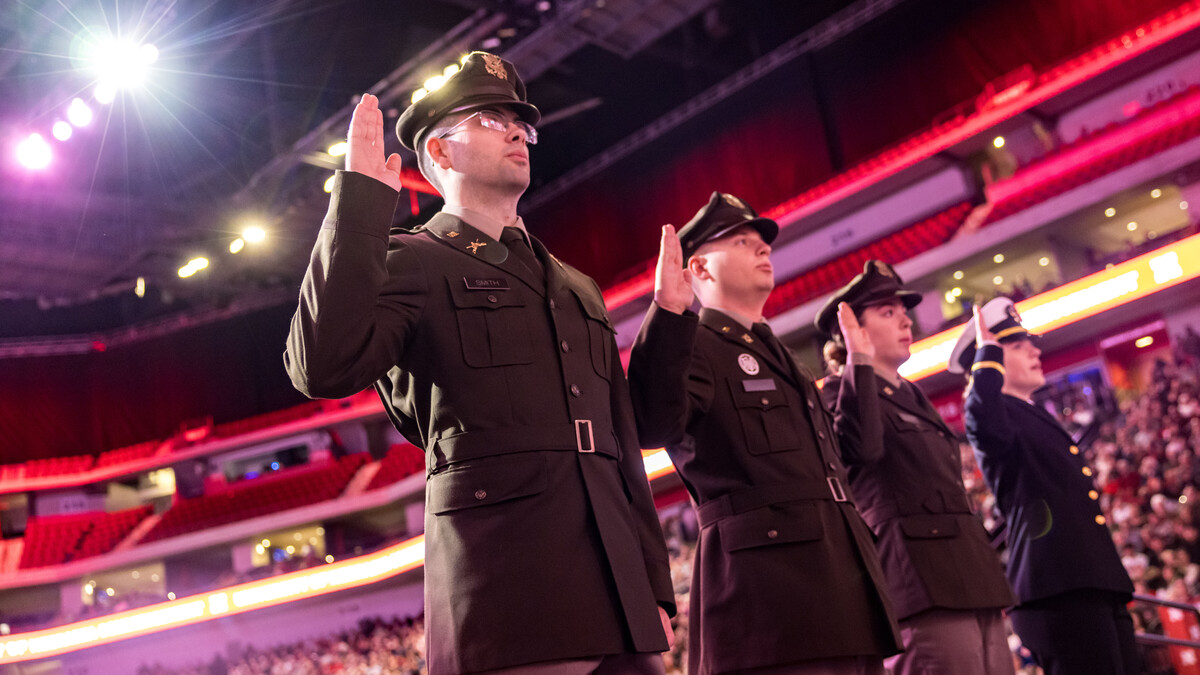
Byron Anway had never before taught the art of watercolor at Nebraska.
But when the university’s pandemic-shifted schedule opened up a pair of three-week sessions in December and January, respectively, the assistant professor of practice in studio art and foundations coordinator took the opportunity to teach Beginning Watercolor I.
It’s a course rarely taught in the School of Art, Art History and Design — but proved popular with the 40 students who enrolled in it.
“I decided to take this course because it was really a once-in-a-lifetime opportunity,” said Joselyn Andreasen, a freshman studio art major from Kennard, Nebraska. “As well as watercolor being a mystery to me, and many others, it seems like a good tool to put in my skill set.”
Cicely Pickel, a junior studio art major from Davey, Nebraska, took the course to count toward her studio art credit with an eye toward graduating early. Pickel dabbled in watercolor painting in high school, she said, but had not touched it again until this course.
“It has been informative and eye-opening,” she said. “I feel like there was a whole medium of painting that I never fully considered until now. I really like this course because I feel like I am learning a lot about my personal style and habits.”
Anway said he was initially hesitant to teach the class online, worried it wouldn’t meet his expectations of what the class was supposed to be. Eventually, he decided to cast aside that worry and instead focus on rethinking how the course’s eight assignments should work in a remote setting.
“When I set up the course, the goal was to do assignments that would work well from a home studio and assignments that would work well over Zoom,” he said. “They’re doing partner portraits over Zoom. The final project is an interior, so the interior maybe has a window going outside. They could have still objects. They could have people. They could have lighting effects. So it’s combining all of the different skills with that we’ve learned.”
Andreasen said she enjoyed the course, calling it “a relief.”
“Like many other students, I have been working a lot over break, and something about watercolor is so soothing,” she said.
The course also helped exemplify the difference between realism and representation, said Anway, who urged his students not to let the former get in the way of the latter.
“That’s one of the goals I have: for students to let go of a predetermined expectation for realism and instead allow the paintings to become paintings about the world and not photographic limitations,” he said.
Pickel said she appreciates that watercolor takes patience — especially because it doesn’t forgive mistakes the way that oil does — but not necessarily a lot of time.
“I was able to apply what I already knew and add so much more information about art history, composition, and what makes a really good painting,” Pickel said. “Byron was very good at teaching all this important information in a non-stressful, encouraging way.”
And painting from a familiar locale, as Andreasen did, allowed her to create paintings that hit close to home and to her heart.
“I am taking this class from my parent’s house, and all of the assignments have been from observation,” she said. “I’ll be able to keep these paintings and remember where I came from.
“Watercolor is my new favorite medium. And it’s truly not as daunting as it may seem.”
Anway, who hopes to offer the course again, said he was also glad that students outside of the department had the chance to engage with art in a way they otherwise might not have.
“Everything about it,” he said, “feels kind of like a gift.”







